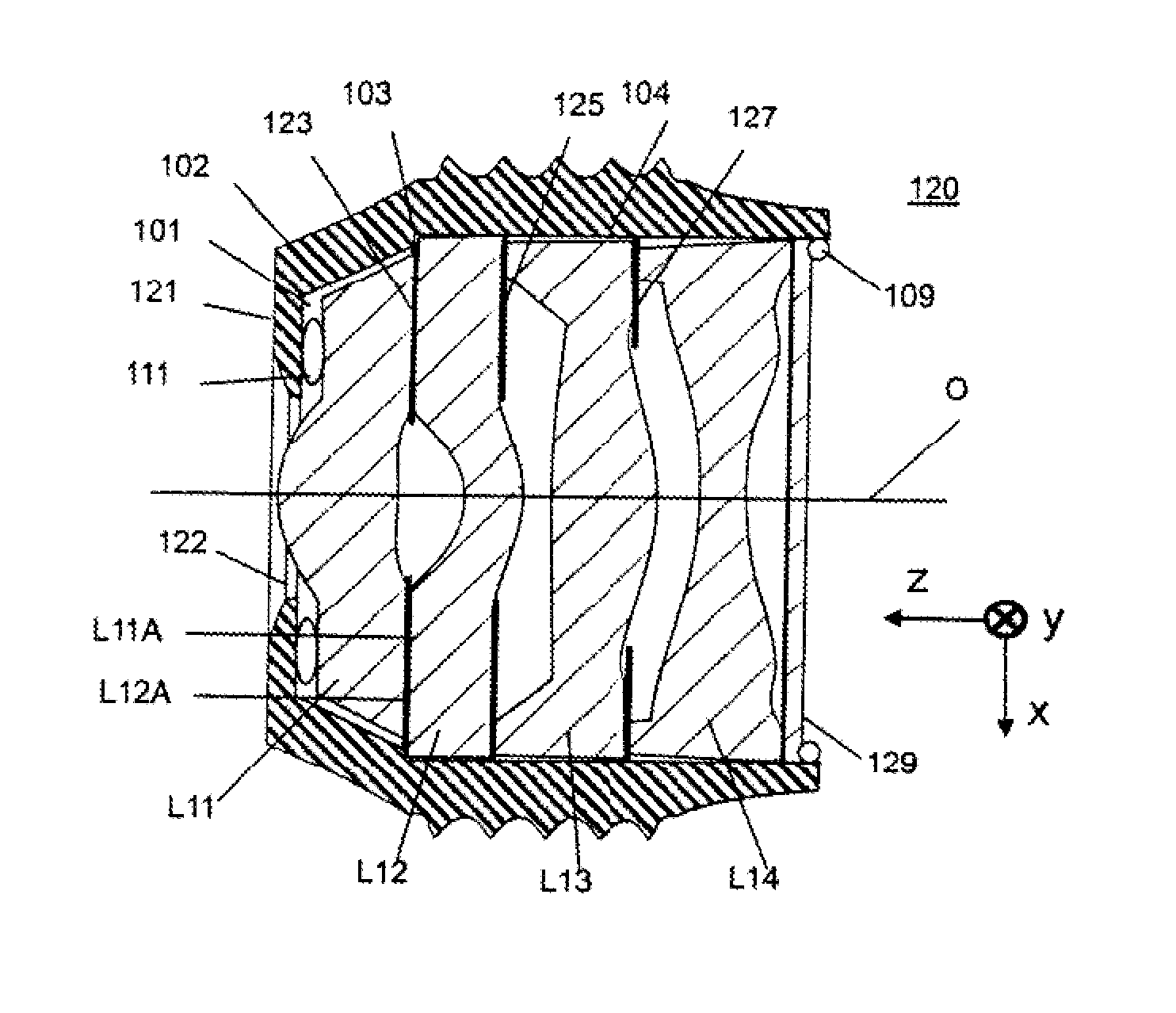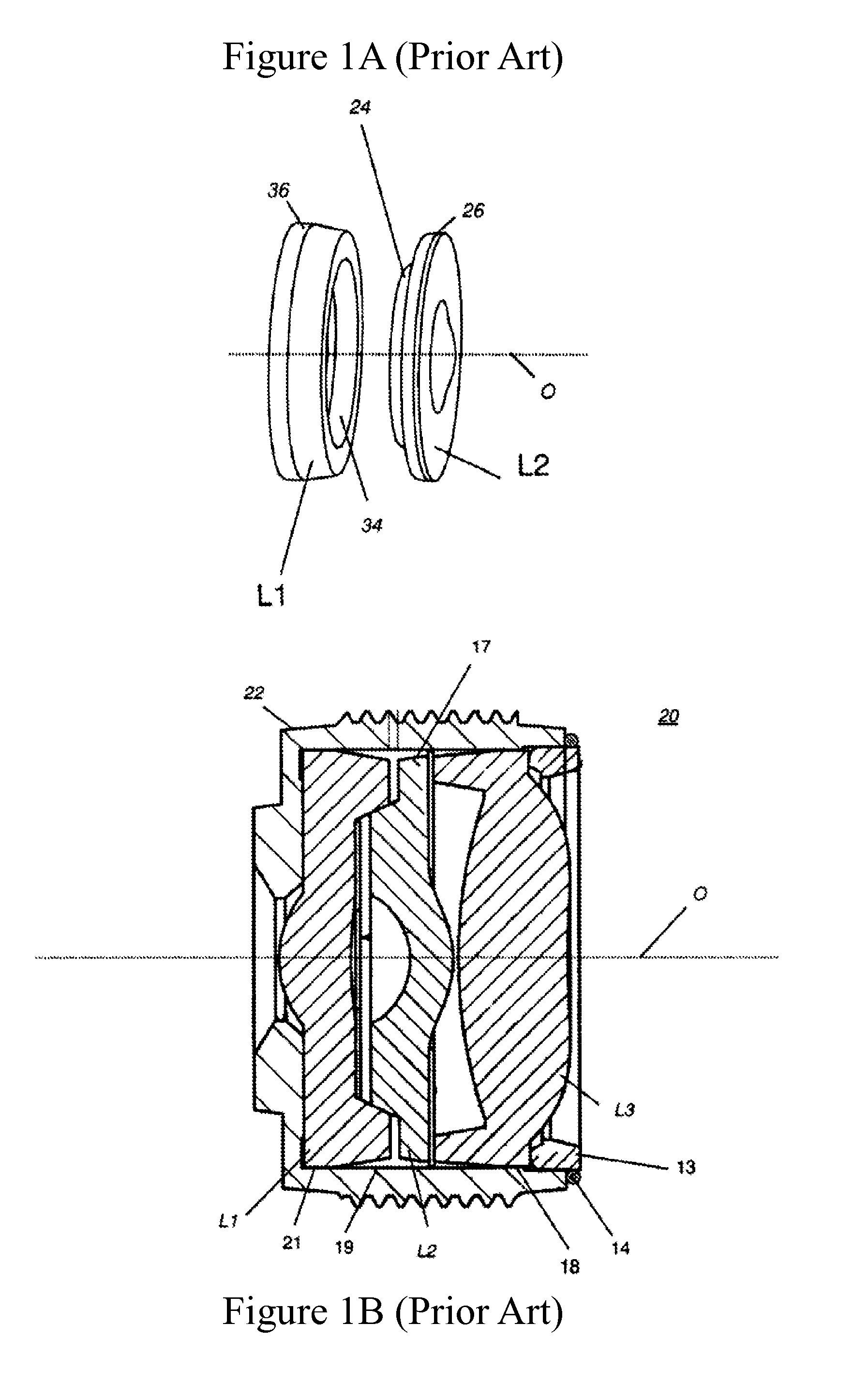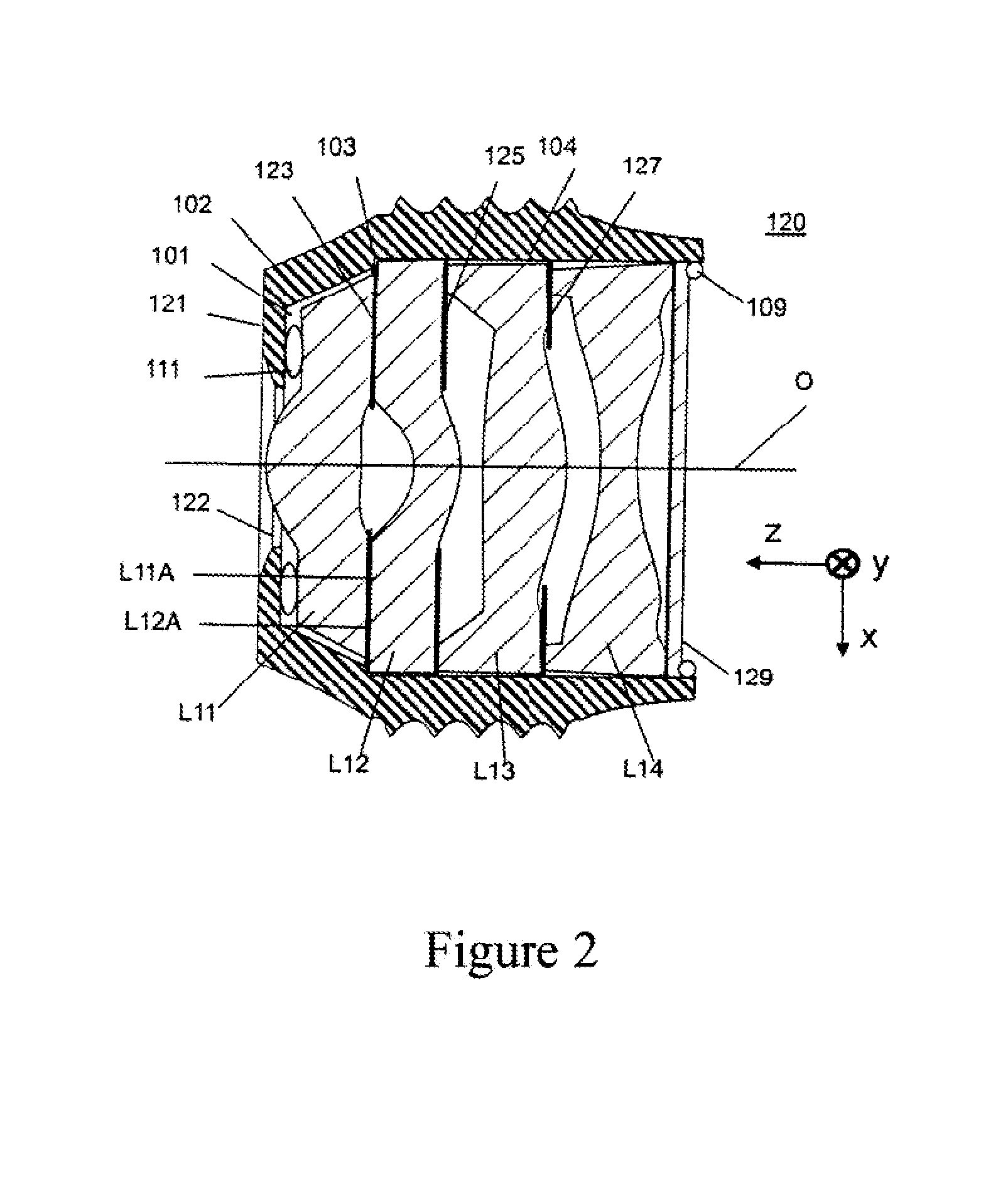Miniature lens assembly and method of making same
a technology of miniature lenses and lens assemblies, applied in the field of miniature lens assemblies, can solve the problems of lens assembly rejection, reduced image quality, and continued demand for smaller and higher quality low cost imaging lens assemblies,
- Summary
- Abstract
- Description
- Claims
- Application Information
AI Technical Summary
Benefits of technology
Problems solved by technology
Method used
Image
Examples
Embodiment Construction
[0034]In accordance with embodiments further described herein, various lens assemblies are provided which may be used in miniature cameras or miniature projectors included in, for example, portable electronic devices such as cellphones.
[0035]Referring now to the drawings, which are included for the purposes of illustrating embodiments of the invention, and not for limiting the same, FIG. 2 shows a cross-sectional view of a lens assembly in accordance with one embodiment of the present invention. The lens assembly 120 is comprised of four lenses L11, L12, L13 and L14, three baffles 123, 125, and 127 and an IRCF (infra-red cut filter) 129 inserted in a lens barrel 121. The baffles are interspersed between the lenses as shown. Lenses L11, L12, L13 and L14 are made of conventional lens material such as glass, plastic, optical crystal or the like. Baffles 123, 125, and 127 are made of conventional baffle material such as plastic, cloth, paper, or the like. Lens barrel 121 is made of conv...
PUM
| Property | Measurement | Unit |
|---|---|---|
| diameter | aaaaa | aaaaa |
| degree of freedom | aaaaa | aaaaa |
| optical | aaaaa | aaaaa |
Abstract
Description
Claims
Application Information
 Login to View More
Login to View More - R&D
- Intellectual Property
- Life Sciences
- Materials
- Tech Scout
- Unparalleled Data Quality
- Higher Quality Content
- 60% Fewer Hallucinations
Browse by: Latest US Patents, China's latest patents, Technical Efficacy Thesaurus, Application Domain, Technology Topic, Popular Technical Reports.
© 2025 PatSnap. All rights reserved.Legal|Privacy policy|Modern Slavery Act Transparency Statement|Sitemap|About US| Contact US: help@patsnap.com



